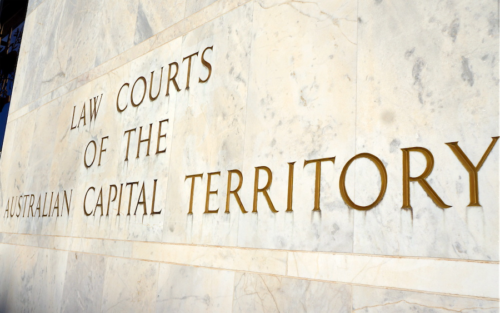
“The lesson for governments is that if home-loan interest rates remain high over an extended period of falls in the value of houses, they run a high risk of being voted from office,” writes PAUL KAUFFMAN.
EVERY family needs a home. There are two ways of gaining one. Either owning a home, in almost every case by borrowing, or by renting.

While a subsequent article will cover renting, this one looks at owning, in Sydney, Melbourne and Canberra, which is often omitted from a discussion of capital-city house prices.
Most homeowners are interested in the value of their home, and in home-loan interest rates, particularly if they are among the 53 per cent of homeowners who have a mortgage.
In Australia, the Consumer Price Index does not include the cost of buying a home. Inflation involves winners and losers. Dr Michael A Jones, of the University of Canberra, undertook ground-breaking research on social housing over many years. He once told me that, during a period of high inflation, you should get into debt over real assets, such as buying your own home, if you can possibly afford to do so.
Successful governments ensure that over time the value of homes increase annually at a greater rate than home-loan interest rates, as shown in Tables 1 and 2, which analyse house prices between 1972 and 2022. Over that 50-year period house prices in Sydney, Melbourne and Canberra rose by 7.3 per cent, 10.4 per cent and 9 per cent each year, and the average home loan interest rate was 7 per cent.
An exceptional period was the Rudd-Gillard-Rudd years, of five years and nine months, between 2007 and 2013, when the average annual increase in the value of a home was less than the cost of a mortgage to buy that home.
This may have been in large part because of adverse international forces, but voters chose to change the government after two terms. Even in that period, if you had 50 per cent or more equity in your home, in cities such as Sydney and Melbourne, it made sense to continue to hold that home, even as a purely economic investment, as you paid 7 per cent interest on your home loan, but effectively only 3.6 per cent on your home’s value. During that period, the annual average increase in value was 4 per cent in Sydney and 3.9 per cent in Melbourne. It also provided the owner a place of residence.
Precise figures for any city vary slightly depending upon sources used, which are listed below. The increases do not allow for home improvements, home rebuilds and larger homes. Forty-six per cent of homes in 2021 had four bedrooms, on much smaller blocks of land than in 1972, which usually accommodated three-bedroom homes.
Over 50 years, owning a home has been an extremely valuable investment, as well as providing the benefits eulogised by Darryl Kerrigan’s barrister in the film “The Castle”: “A house is more than just a structure of bricks and mortar, but a home built with love and shared memories.”
There were significant house price booms in most capital cities between 1971 and 1974, from 1979 to 1981, from 1987 to 1989, from 1996 to 2003 and from 2020 to 2022. After each boom, real prices tended to fall for a short period. They fell in many locations between December 2007 and February 2009, and between July 2017 and June 2019.
The take-away lesson for citizens is to keep your home despite housing price dips, and to buy a home as a long-term investment and place to live if you have secure employment and can afford to do so.
The take away lesson for governments is that if home loan interest rates remain high over an extended period of falls in the value of houses, they run a high risk of being voted from office.
TABLE 1: Average Annual Median House Price Increases 1972-2022 (Sydney, Melbourne, Canberra), noting periods of different Australian governments.

TABLE 2: Median House Prices in 1972 and 2022 (Sydney, Melbourne, Canberra)

Data from ABS, Core logic, propertyupdate.com.au AFR July 6 rba.gov.au/statistics/tables/#interest-rates Peter Abelson and Demi Chung 2004, econ.mq.edu.au/__data/assets/pdf_file/0018/220581/Abelson_9_04.pdf
Dr Paul Kauffman has administered a national concessional home ownership and housing grants scheme for 12 years and has researched housing. He is a professor at the National Institute for Governance at the University of Canberra. Dr Cameron Murray, Dr Doug Fraser and Dr Mark O’Connor are thanked for their comments on a draft of this article.
Email paul.kauffman@gmail.com.
Who can be trusted?
In a world of spin and confusion, there’s never been a more important time to support independent journalism in Canberra.
If you trust our work online and want to enforce the power of independent voices, I invite you to make a small contribution.
Every dollar of support is invested back into our journalism to help keep citynews.com.au strong and free.
Thank you,
Ian Meikle, editor





Leave a Reply